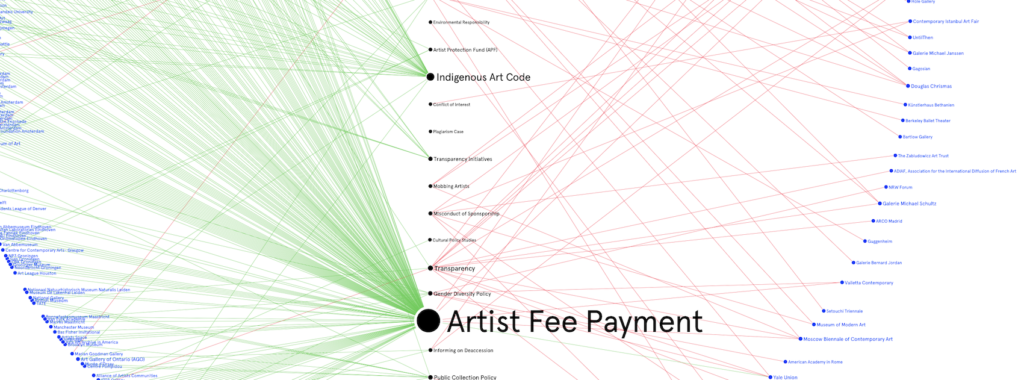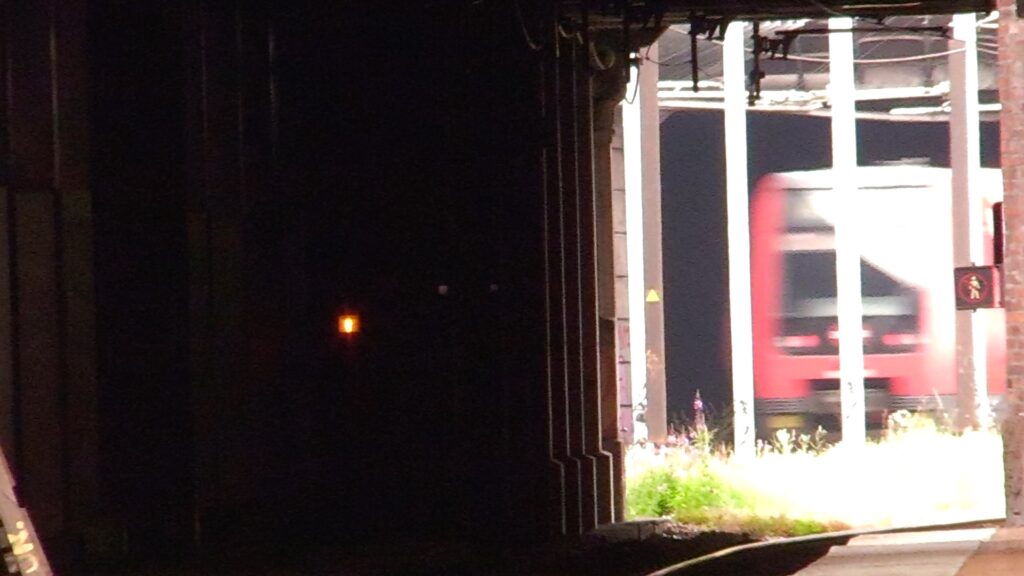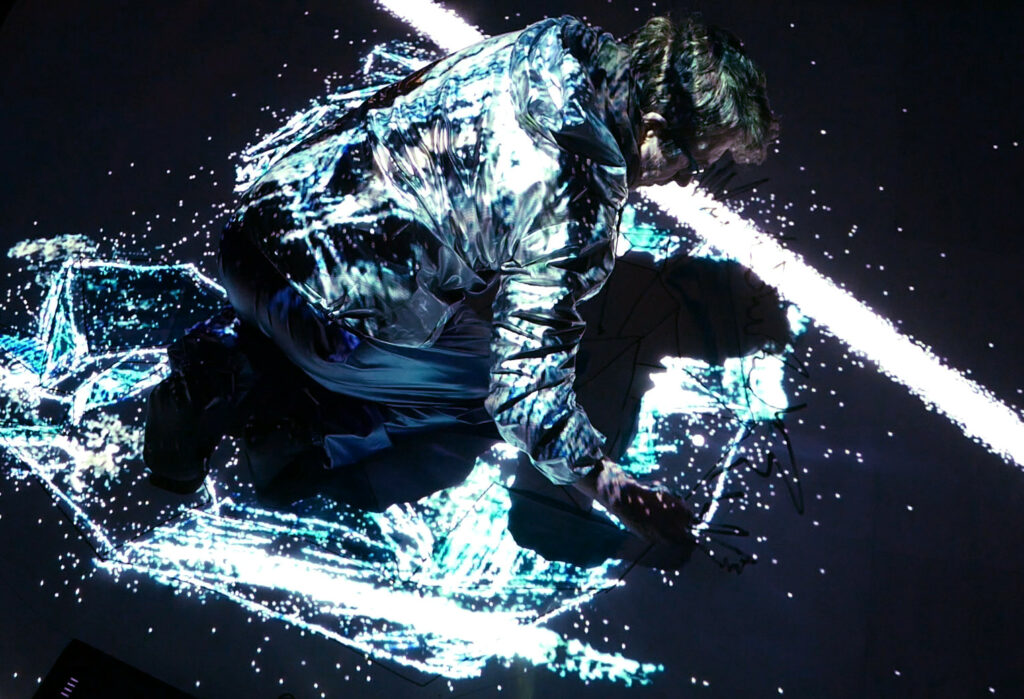
We are busy refreshing this website as part of the new Experience Lab project. Until then here you have a poster about general information.


We are busy refreshing this website as part of the new Experience Lab project. Until then here you have a poster about general information.
Layering digital information onto the physical world
Real-time hand perception is challenging for computer vision – but holds large potential for layering digital information into the physical world, for example as in augmented reality.
According to RUC interaction design researcher, Mads Høbye, a great resource for hand perception is found on ai.googleblog The site provides a cutting edge machine learning library that can detect hand poses with just a webcam. The technology used to be reserved for more advanced stereographic depth-sensing cameras. Now it can be done with just a webcam and a few lines of code in the web browser.


A great resource for user experience research and evaluation is the website allaboutux.org. The collection provides an overview of several categories of user evaluation methods, as well as instructions for how to use the methods. Great for lab studies, field studies and online studies. Find out how users feel about interactive systems. Many of the methods can easily be modified and used for non-digital interactions.
A recommendation from curator, Ph.D. Candidate Anne Julie Arnfred: try Graph Commons. which is a tool that can help you visualise large bodies of data.
I have used Graph Commons as a tool when handling a large pool of fragmented data and other research material. Getting an overview of the data helps me to get an idea of what I already have, what is missing , and what is (and might stay) uncapturable or silent.
In other words, Graph Commons works well as a processual tool for laying the ground for a research and find connections between different data assemblages.
However, you should be aware of that when forming the graph, and relating the fragments to specific other fragments, you are also creating a narrative, that can end up as un-flexible as the one you (might) did the research project to escape from.
Therefore, when using a tool such as Graph Commons, I have to continually ask myself, what the counter narrative (to the narrative I propose in the graph) would be, and recurrently try to disrupt the exact same narrative that I am building.
If it were possible to facilitate the entering of unplanned or for me unforeseen fragments to enter the graph, it wouldn´t work so much as just a new narrative, but instead work as a different way of looking at entanglements and past, presents and futures. Therefore I´m in the moment reflecting on how this could be facilitated, so please ad suggestions , if you have any.
Anne Julie’s ph.d. project Curating research – the researching art exhibition as knowledge generator explores how curating and the curatorial may contribute to scholarly research.

On the move: approaches to mobility is a short film made within the framework of the project EMIDEKS (Emotional Interaction design for knowledge sharing), developed by a transdisciplinary team of researchers from Roskilde University. On the move presents different approaches to mobility coming from the research team perspectives. The images were taken at the beginning of the project in the city of Copenhagen, trying to capture some of the mobility-related environments that unfold in this location. Each of the participants wrote a text and selected the music for each story, thus presenting their own narrative.
A showing and discussion of On the move will take place June 18th at 12-2 pm as part of the Experiences of Research seminars. You are welcome to join. For more information check out the programme: Experiences of Research – Making Knowledge Methodology Seminars

On the move by Fernando Palacios
Fernando Palacios
Doctor in musicology, his research work focuses on music, culturally and socially contextualized. He works with creativity as the fundamental axis of his activities: musical performance, teaching and research.
The Experiences of Research – Making Knowledge Methodology Seminars explore interaction formats for knowledge sharing and collective knowledge creation.
The presentation of the two research articles Performative Schizoid Method & Knowledge Catcher, happened in the form of a co-performed, poly-phonic introduction, voiced by Mads Høbye, Eduardo Abrantes, Christian Jacquemin and Connie Svabo. The co-created knowledge sharing was based on the manuscript found below.
For an alternative reading of the manuscript, spell your way through the text while listening to Surfin’ Bird. (Thank you Eduardo!). For more researcherly enactments of birdiness, see the article on the Performative Schizoid Method.

A co-performed (schizoid?) introduction
For the discussion of the articles Performative Schizoid Method: Performance as Research & Knowledge Catcher: On the Performative Agency of Scholarly Forms. May 14th 2020, Experiences of Research, Making Knowledge Methodology Seminars –
By Connie Svabo
As a short introduction, I would like to mention how I see these two pieces relate to our overall theme of ‘experiences of research’ and the subtitle of the seminars of methodologies of ‘making knowledge’:
The performative schizoid method works with a dimension of experiences of research – namely that of identity and whether it is possible to both do research and art; to both be a researcher and an artist.
The performative schizoid method does this by exploring sensory engagements – and processes of making, which have a kind of ‘doodling’ approach – that is, they are framed as non-goal-directed processes – processes of trying out things and playing with purposelessness, trying to let random materials and findings have a say.
The article focuses on art and research – and the identity positions of the researcher and the artist, but I find that this issue is of much broader relevance for researcher identity and knowledge making: more generally in relation to the relationship between research and practice – and how, for example, people who have a practice-background might include this practice-based knowing in their academic work.
This is relevant for arts-perspectives, but also for designers, teachers, nurses, administrators, journalists, communication professionals etc.
With the performative schizoid method, I seek to disturb the idea that one person has one identity, one role, one way of engaging in knowledge production, and I try to develop a methodological position, from which
partial identities
and knowledges
can come into play
in research.
Both of these pieces – the performative schizoid method and the knowledge catcher – relate to experiences of research in the sense that they seek to include sensory and emotional engagements in knowledge making.
The knowledge catcher piece engages with the notion that emotionality can be given space in the making of research and in the experiencing of research. The article takes an idea from design studies which is called ‘emotionalize design’ and suggests that how researchers feel about their work might be relevant to include in assessments of quality.
The article furthermore extends the importance of emotions into the reading situation – by providing the Knowledge Catcher as a device for creating an emotional choreography of knowledge co-creation – where it is suggested that the readers feelings may guide the reading experience: represented in the feelings of being bored, annoyed, skeptical or intrigued.
The knowledge catcher seeks to foreground the performativity and relationality of knowledge creation – wanting to connect readers and writers in collaborative performances.
Collaborative Performances
of Making Knowledge – exploring
experiences of research.
Emotional Interaction Design for Knowledge Sharing
Experience Lab Seminar May 28
As part of the Experiences of Research – Making Knowledge Methodology Seminars May 28 12-2 pm 2020 Experience Lab will host an online seminar with Christian Jacquemin (artist’s name Yukao Nagemi) about the research project Emotional Interaction Design for Knowledge Sharing (EMIDEKS), which is supported by Roskilde University’s Centre for Interdisciplinary Research and Education in Circular Economy and Sustainability and is a transdisciplinary research collaboration with researchers and practitioners from computer science, art, anthropology, communication, performance and design.
The goal of the project Emotional Interaction Design for Knowledge Sharing is to perform design experiments based on knowledge generated by social scientists from ISE and with the purpose of understanding how scientific knowledge can be disseminated in ways that touch audiences in new ways.
The project experiments with an innovative methodology for experiencing knowledge through interactive installations. The project aims at sharing scientific knowledge about migration through artistic installations evoking emotional responses from viewers and exploring the impact of these installations on audiences.
The main case study is about processes of stigmatization, discrimination, inclusion and exclusion in migration contexts and incorporates innovative content including interviews with migrants and recordings of their heart-beats during interviews. Several interviews of migrants were made by project leader, Associate Professor Eric Hahonou and Visiting Scholar Fernando Palacios to serve as a basis for scientific analysis and the design of artistic installations.
Design Experiment
Installation by Computer Scientist / Artist
A design experiment for knowledge sharing is carried out by Christian Jacquemin, who was a computer scientist at University Paris Saclay until 2017. Jacquemin practices as an artist under the name Yukao Nagemi and continues to engage in and promote art-science collaborations.

Touching Sensors and Flickering Light
Christian Jacquemin/Yukao Nagemi: My contribution to this project started with a fine analysis of the 1 hour interview of one of the participants (C.), an African-born electrician who migrated to Denmark in his 30s as a political refugee. His interview was video-recorded together with a capture of his heartbeats.
After a careful listening to his interview and discussions with the scientific partners in the project, I have designed an artistic installation based on C.’s words with the purpose of making the audience aware of what C.’s migration and integration process represent as a personal and social experience.
The installation consists of lamps connected to sensors that flicker in the dark while unfinished sentences are pronounced at each flicker. By touching sensors, the visitors can progressively light up the lamps and listen to complete sentences about his life from Africa to Denmark.
Through this installation and the experience of it by the visitors, I hope to make visitors aware of the importance of social connection to a migrant’s integration (through the use of sensors and their possible simultaneous activation), highlight C.’s strong personal drive in life (through the use of a visible red thread connecting the lamps, and the uttering of the sentences), together with his pragmatism and adaptability (by using recycled lamps). By touching sensors made of C.’s personal objects, visitors cancel light flickering and fragmentary talk to access his story through longer sentences, unraveling some of C.’s thoughts on his personal life, a complex mixture of a foreign past, a migration process, and his current state of life.
After briefly presenting the design of the installation, the main purpose of this seminar is to have an exchange wit the participants about several open questions, some of them were raised after discussions with Eric Hahonou due to his scientific experience of artistic mediation, and his personal knowledge of C. who is also a friend of him.
About Christian Jacquemin / Yukao Nagemi
Christian Jacquemin was a computer scientist at University Paris Saclay until 2017. He was a teacher in computers graphics, and a researcher in virtual and augmented reality. He also collaborated regularly with artists, and promoted the art science festival Curiositas.
In parallel to his scientific work, Jacquemin developed his own artistic work on augmented performative drawing under the artist name Yukao Nagemi. He focuses on gestural response and the link between visual and sonic rendering. It is through the collaboration with singer, musician and composer Lola Ajima, in the audiovisual duo Lola and Yukao Meet, that he developed a unique practice where the drawing performance is closely linked to the temporal dynamics of music. He also collaborates with dancers, composers and musicians of contemporary music. Digital technology is an instrument for the amplification and the expressivity of the graphical gesture which interweaves manual graphic traces and generative effects.
Yukao Nagemi’s three main graphic expression techniques are ink drawings, digital drawing performances and, recently, vector videos.
Instagram @yukao.nagemi
Lola and Yukao Meet: https://lolaandyukaomeet.com
Making Knowledge Methodology Seminars
Join us online for the Experiences of Research: Making Knowledge Methodology Seminars.
Everyone is welcome. Join via zoom at the allocated time: https://deic.zoom.us/j/3492049221
Prepare for the seminar by reading the linked text and conceiving a response. Your response may be exploratory: creative, intellectual, discursive – whatever makes your heart tick!
This is a revised online version of the seminar programme. For more background information about the seminar series see the original programme.
| Date | Time & Theme | | |
| April 16 | | 12 – 2.15 [5] Sonic advances and retreats: artistic research, leaky acoustics, and a note on how care killed the cat Artistic Research / Curiosity / Sonic Strategies / Aesthetics/Ethics EDUARDO ABRANTES | |
| April 30 | | 12 – 2.15 [2] Drifting in Research: Homo Explorens and Open Inquiry Design Studies / Interaction Design / Designs for Learning MADS HØBYE | |
| May 14 | | 12 – 2.15 [8] Performative Schizoid Method: Performance as Research [9] Knowledge Catcher: On the performative agency of scholarly forms STS / Art-based Research / Performance Studies / Working With Materials CONNIE SVABO | |
| May 28 | | 12 – 2.15 [7] Exploring emotional Journeys: Migrant Knowledge Giving Emotional Interaction Design / Knowledge Sharing CHRISTIAN JACQUEMIN (artist name yukao nagemi) | |
| June 18 | | 12 – 2.15 Exploring emotional Journeys: Migrant Knowledge Giving Emotional Interaction Design / Knowledge Sharing FERNANDO PALACIOS (EMIDEKS) | |
| | |||
| | You are welcome Join us online for the Experiences of Research: Making Knowledge Methodology Seminars. | ||
| | |||
| |
MADS HØBYE
Design Studies / Interaction Design / Designs for Learning
Two papers on Drifting in Research
Primary paper: http://www.hobye.dk/publications/designsforlearning
Furthermore, a short paper example: https://archive.nordes.org/index.php/n13/article/view/315
Eduardo Abrantes
Keywords: Artistic Research, Curiosity, Sonic Strategies, Aesthetics/Ethics
Is it fair to think of hearing as the most investigative of the senses? The most defined by the complex, intersecting, border hopping choreographies of curiosity – by, sometimes unwelcome, permeability?
Be it through walls (which themselves, a well-known fact, have ears), behind one’s back, in passing, overheard intentionally or otherwise, this paper explores selected junctures between artistic research and sonic strategies, relating to a multi-layered understanding of “curiosity” as an operative principle. It will focus mainly on two elements: a short history of aesthetic approaches, of how the prying ear has been mediated by aural technology; and how these have intersected both with the artist-researcher’s situationally anchored ethos, and with society at large, via forensic, privacy, and knowledge ownership issues.
The paper presentation will be illustrated-activated by an immersive multi-channel soundscape built around the issues discussed above. This will underline the aurally embodied aspect of “curiosity” as a means of engagement, and its confrontation with the obstacles, limitations, and gifts of incompleteness and the partiality of situated perspective.